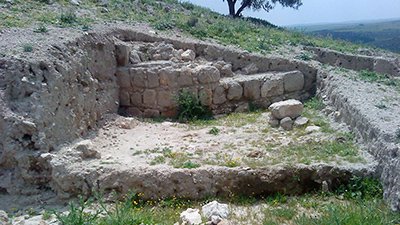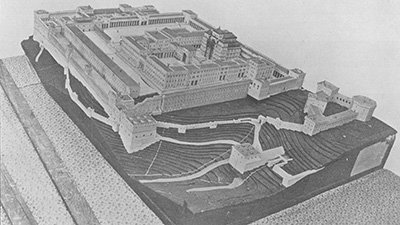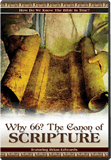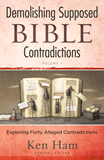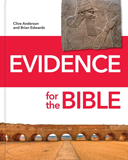Ancient Hebrew Tablet Stirs Theological Debate
An ancient stone tablet covered with Hebrew text has created a “quiet stir” in biblical and archaeological circles, reports the New York Times.
News Source
- New York Times: “Ancient Tablet Ignites Debate on Messiah and Resurrection”
As with so many “discoveries” (both paleontological and archaeological), the find was actually made long before its significance was noted. In this case, the stone tablet was found around a decade ago but only drew attention after a paper was published on the stone last year. Ever since, attention on the stone has been on an upward spiral.
So what could the 87 lines of Hebrew text on the stone say that would cause a stir? According to the Times, the text—which may date from before the birth of Christ—“may speak of a messiah who will rise from the dead after three days.” The Times concludes that if so, the text “suggests that the story of [Christ’s] death and resurrection was not unique but part of a recognized Jewish tradition at the time.” One wonders if the unsaid conclusion, then, is that the gospel accounts of Christ’s death and Resurrection may be fabrications based on a cultural motif of the time period, since it is stated that this find may “contribute to a developing re-evaluation of both popular and scholarly views of Jesus.”
As a whole, the text is mostly the record of an apocalyptic vision allegedly delivered by the angel Gabriel. One of the passages causing the stir is found in lines 19 through 21 of the tablet: “In three days you will know that evil will be defeated by justice.” That is a central part of the basis for this incarnation of the argument that Christ’s death and Resurrection were just an off-the-shelf plot device.
Underwhelmed (again)? Indeed, what the text says (in the translation the Times publishes) certainly seems to be a far cry from the stone’s reportedly Christianity-challenging message that the media has promoted!
Knohl had “no textual evidence from before Jesus” for his theory.
So let’s take a look at where this claim is coming from. The progenitor of this news-making hypothesis about the meaning of the text is Hebrew University Bible professor Israel Knohl, who is described by the Times as “iconoclastic.” Knohl’s idea that the “suffering messiah” motif originated before Christ was originally proposed in a 2000 book. The catch? Knohl had “no textual evidence from before Jesus” for his theory, reports the Times, and thus it was largely disregarded. After Knohl read about the stone, he then added this evidence to his idea (or, one could argue, used his idea to interpret the evidence), which resulted in his now-newsmaking thesis.
Let’s read what the Times summarizes of Knohl’s idea, with our emphases:
In Mr. Knohl’s interpretation, the specific messianic figure embodied on the stone could be a man named Simon who was slain by a commander in the Herodian army, according to the first-century historian Josephus. . . . Mr. Knohl focuses especially on line 80, which begins clearly with the words “L’shloshet yamin,” meaning “in three days.” The next word of the line was deemed partially illegible . . . says the word is “hayeh,” or “live” in the imperative. It has an unusual spelling, but it is one in keeping with the era. Two more hard-to-read words come later, and Mr. Knohl said he believed that he had deciphered them as well, so that the line reads, “In three days you shall live, I, Gabriel, command you.” To whom is the archangel speaking? The next line says “Sar hasarin,” or prince of princes. Since the Book of Daniel, one of the primary sources for the Gabriel text, speaks of Gabriel and of “a prince of princes,” Mr. Knohl contends that the stone’s writings are about the death of a leader of the Jews who will be resurrected in three days.
Let’s begin by examining the “facts,” as well as the artifact. Our first point, then, is that this news-making theory is (a) just one and the latest hypothesis on the stone; was (b) made by an “iconoclastic” professor who we can presume isn’t “unbiased” when it comes to Christianity; and is (c) based heavily on said professor’s interpretation of partially illegible and, in one case, atypically spelled words.
Secondly, the Times points out early that given concerns over artifact forgery, the tablet’s authenticity will likely not be verified for years (if, indeed, full verification is even possible), and scholars will even then probably continue to debate the exact meaning and authorship of the text, although at present, there does not seem to be reason to doubt the stone’s authenticity.
What about the date?
Third, what about the date? The current conclusion that the stone was inscribed toward the end of the first century BC was established by an analysis of the shape of the Hebrew script and the language use. A chemical examination of the stone is underway, but no radiometric date has been reported. Thus, while there are indications of the general time period of the text, its origin before Christ’s death and Resurrection is also an unproved conjecture; if the tablet originated after Christ’s earthly ministry, it may even represent a borrowing of the widely reported account of Christ’s resurrection.
Fourth, as mentioned above (and this time in the Times’s words), “The stone is broken, and some of the text is faded, meaning that much of what it says is open to debate.” Also, Moshe Bar-Asher, president of the Israeli Academy of Hebrew Language and emeritus professor of Hebrew and Aramaic at the Hebrew University, spent extensive time studying the tablet’s text. Regarding Knohl’s hypothesis, Bar-Asher commented, “There is one problem: In crucial places of the text there is lack of text. I understand Knohl’s tendency to find there keys to the pre-Christian period, but in two to three crucial lines of text there are a lot of missing words.”
Finally, Knohl’s interpretation is that the tablet’s messiah figure is a man named Simon, yet the Times’s wording and the comments of Hebrew expert Ada Yardeni show that this, too, is uncertain. The possibility that the tablet could apply to Christ Himself is obviously tied in on the interpretation of who the stone is about as well. With so many uncertainties in Knohl’s theory, we don’t consider it a paramount “threat” to Christian doctrine.
But let‘s step back now from criticism for a moment. Forget about the many problems with Knohl’s interpretation. What if what he said is accurate? What if the tablet is no forgery and predates Christ’s ministry recounted in the New Testament, and what if Knohl’s reading of the partly illegible words is accurate and his interpretation fair?
The story actually reminds us that Christ fulfilled the prophecy of the Old Testament.
In that case, we may consider the words of Talmudic culture expert Daniel Boyarin of the University of California–Berkeley. “Some Christians will find it shocking—a challenge to the uniqueness of their theology—while others will be comforted by the idea of it being a traditional part of Judaism,” Boyarin said.
We would redefine Boyarin’s words a bit: while at first it may appear to some to be a challenge to Christ’s uniqueness, the story actually reminds us that Christ fulfilled the prophecy of the Old Testament. For example, in Hosea 6:2 we read, “After two days He will revive us; On the third day He will raise us up, that we may live in His sight” (NKJV). The Jews also had the example of Jonah, who was in the belly of the fish for three days, as Christ referenced (with regard to his own entombment) in Matthew 12:39–41.
Thus, even if Knohl has interpreted the stone correctly, the stone’s text does not trump nor predate the story of Christ; rather, it echoes the prophecies of Christ from the Old Testament. Perhaps, if Knohl is right about everything except his interpretation that the stone is about a “Simon” being the Messiah, it would seem the stone could even be a valid account about Christ—though such a hypothesis goes far beyond what we know about the stone now and probably beyond what we ever may know.
Further Reading
For More Information: Get Answers
Remember, if you see a news story that might merit some attention, let us know about it! (Note: if the story originates from the Associated Press, FOX News, MSNBC, the New York Times, or another major national media outlet, we will most likely have already heard about it.) And thanks to all of our readers who have submitted great news tips to us. If you didn’t catch all the latest News to Know, why not take a look to see what you’ve missed?
(Please note that links will take you directly to the source. Answers in Genesis is not responsible for content on the websites to which we refer. For more information, please see our Privacy Policy.)
Recommended Resources

Answers in Genesis is an apologetics ministry, dedicated to helping Christians defend their faith and proclaim the good news of Jesus Christ.
- Customer Service 800.778.3390
- © 2024 Answers in Genesis


